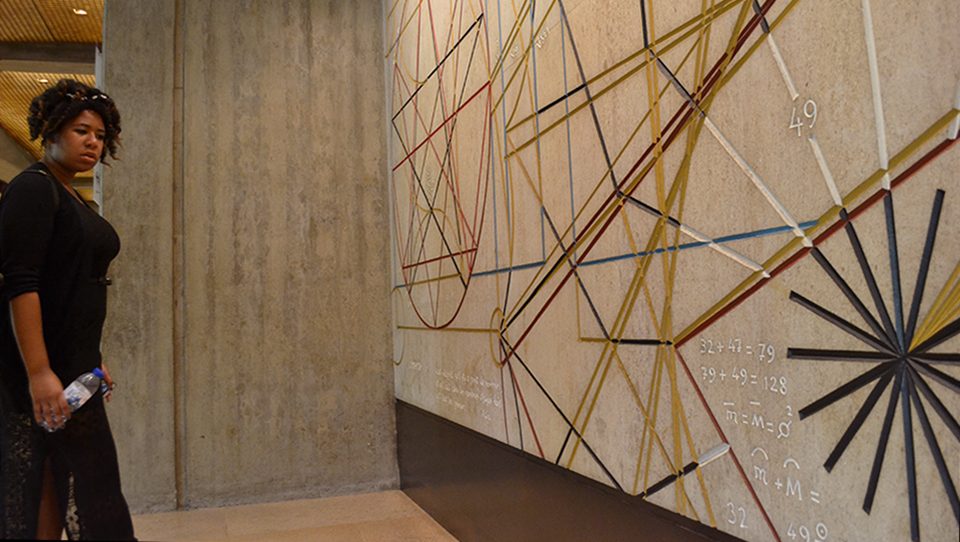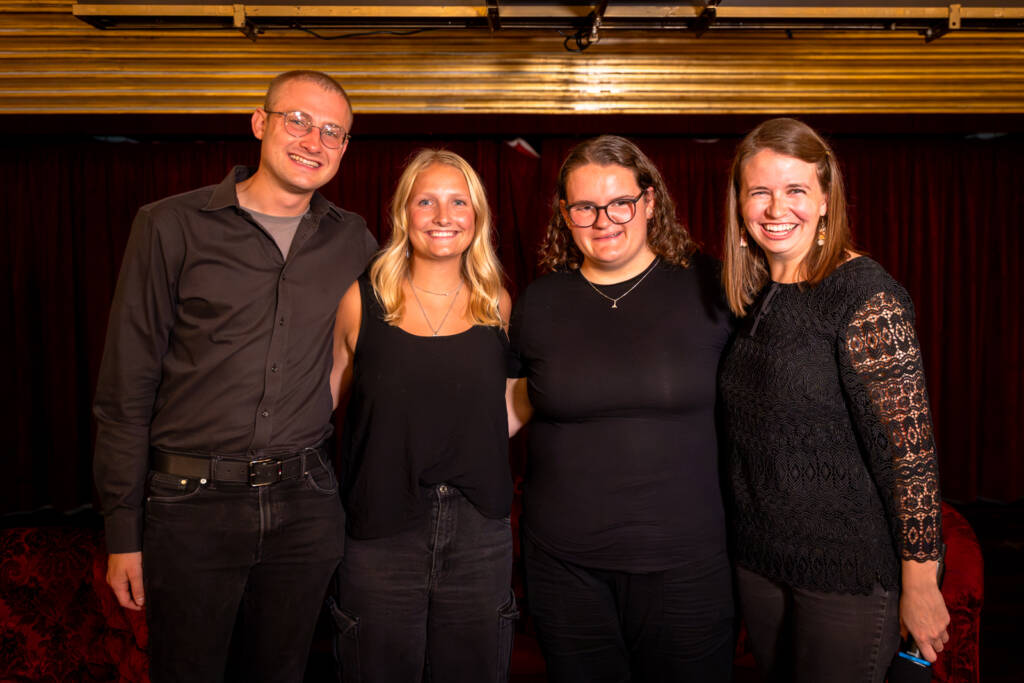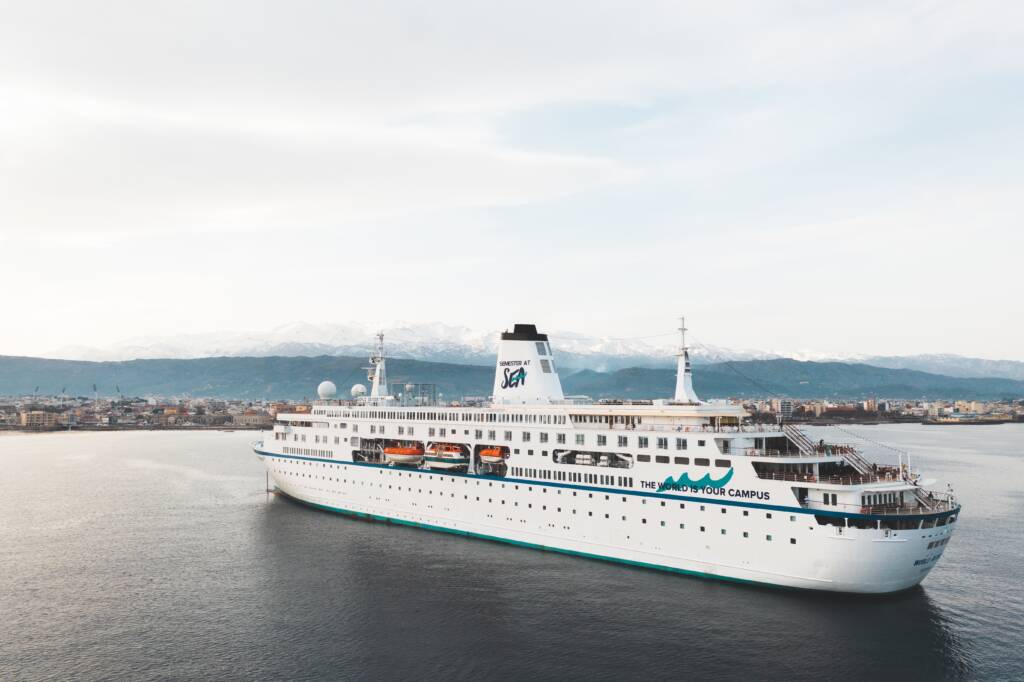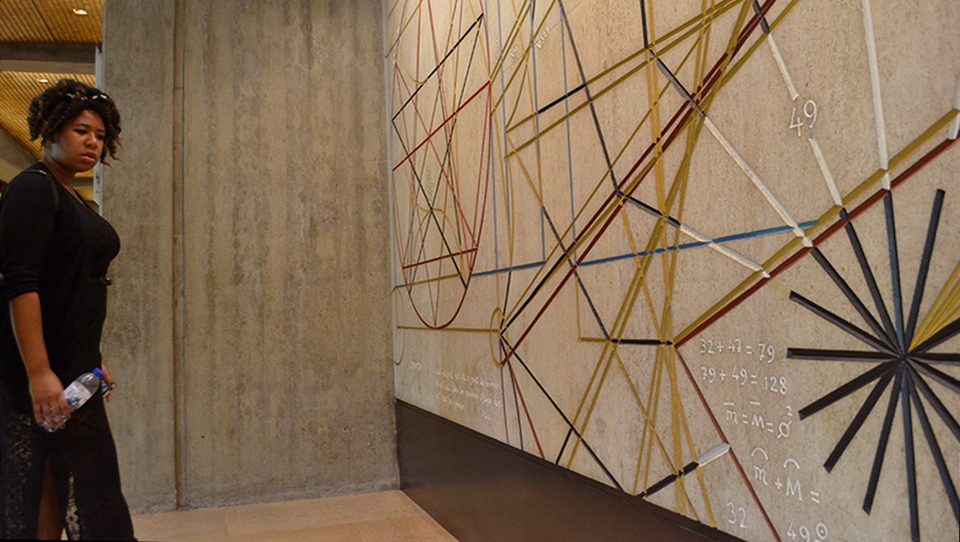
“There’s math everywhere!” exclaimed Shannon Evans, from Pace University, as she stood in front of a mural by Almada Negreiros which the group stumbled upon in the lobby of the Gulbenkian Foundation in Portugal. Many passing through the building overlooked this mural, but for Professor Steve Wassell’s Mathematics and the Arts class this work was a visual representation of their coursework coming to life.
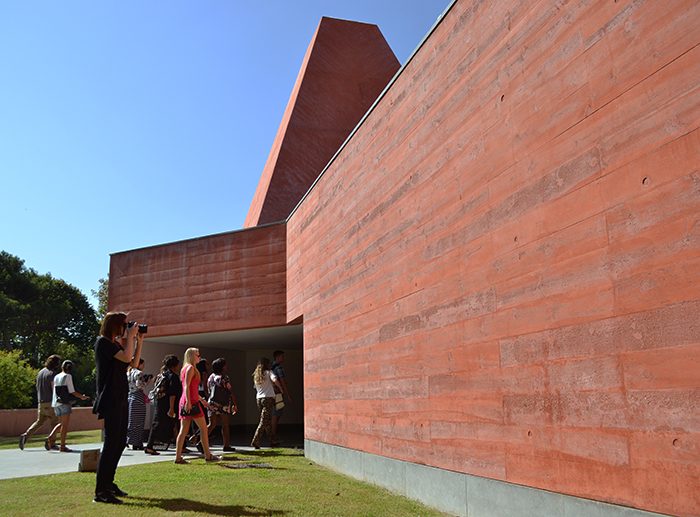
The Gulbenkian Museum was one of many collections and architectural wonders that students explored during their time in Lisbon and Cascsais with Professor Wassell. His class crosses multiple fields of traditional study and helps students connect the dots between two subjects that might seem unrelated to outsiders. Along with Joao Pedro Xavier, Vice Chair of the Faculty of Architecture at The University of Porto, he showed students the variety of masterpieces Portugal has to offer, including two recipients of The Pritzker Architecture Prize. The two pointed out concepts such as symmetry, geometry, and more in a myriad of works, from Persian rugs to paintings, mirroring the diversity of the works studied in the classroom. Professor Wassell also pushed students to discover pieces that appealed to them and asked them to critically evaluate each one with the tools they learned in class.
Originally surprised by the curriculum, many students found the cross-discipline nature of the course only helped bring their majors and passions to life. “I’ve enjoyed learning more about math and incorporating something I’m studying,” said Sarah Jane McIntyre, a service design major from Savannah College of Art and Design (SCAD). Originally a fan of popular impressionist pieces, she found herself striving to discover different works as well as apply the mathematical concepts to some of her favorites. “I wonder if I can apply some of the things we are learning to impressionism. Maybe not, but I do stop and think ‘I wonder if I can apply that here.”
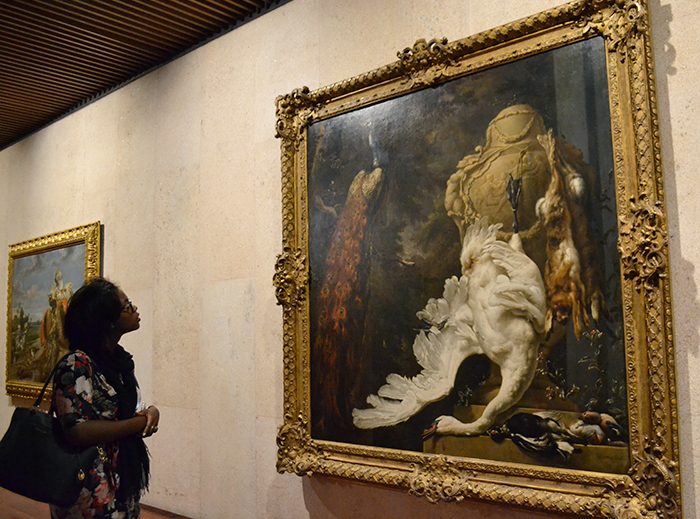
With each sculptural, painted, and architectural masterpiece that was unveiled along the way, it was clear the journey through the course was driven by the students themselves. While the subject matter was the same for all, the opportunities for application were endless.
Fashion major from Columbia College, Abeni Pierson, found herself drawn to pieces that were not always highlighted by guides. “I did visit museums before but now see the mathematical side,” she said. In her own field she saw math not only as a necessity but the foundation for some of her favorite designers. “Fashion is always playing with symmetry,” Pierson added. That concept, among others introduced by Wassell, left her recently entranced by the style and silhouettes of designer Yohji Yamamoto.
For Professor Wassell, these in-port experiences and individual discoveries are the best way for students to elevate and conceptualize what they learn in the classroom. While the course syllabus focuses on mathematics in art, architecture, and music, it also opens the door to such passions as Pierson’s.
His goal for his himself as well as his students is “to explore and extol the mathematics of beauty and the beauty of mathematics.” With many countries ahead, their opportunities to continue these discoveries are endless.
